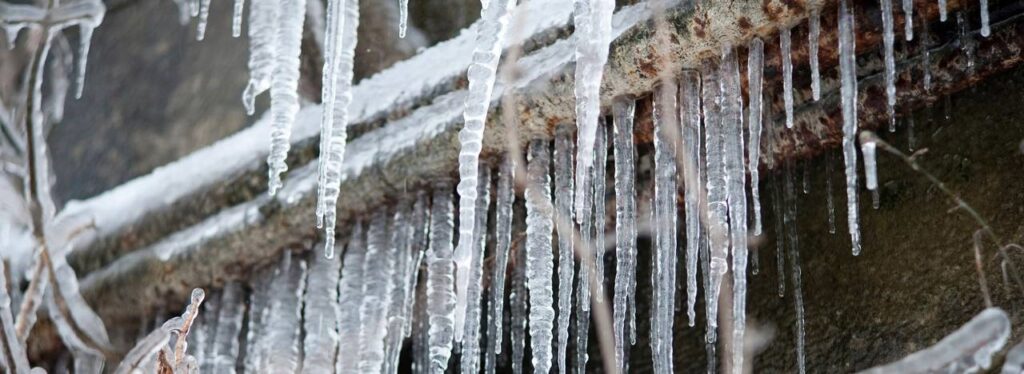Important Advice to Prevent Frozen Plumbing in Winter: Specialist Insights
Important Advice to Prevent Frozen Plumbing in Winter: Specialist Insights
Blog Article
Everybody seems to have their personal perception in relation to Prevent Frozen Pipes .

Winter can wreak havoc on your pipes, specifically by freezing pipes. Right here's just how to avoid it from taking place and what to do if it does.
Introduction
As temperature levels decline, the danger of frozen pipelines boosts, possibly causing expensive repair work and water damage. Recognizing exactly how to prevent icy pipelines is important for home owners in cool climates.
Avoidance Tips
Shielding at risk pipelines
Wrap pipelines in insulation sleeves or use warmth tape to secure them from freezing temperatures. Concentrate on pipelines in unheated or outside locations of the home.
Heating strategies
Maintain interior rooms properly heated, especially locations with plumbing. Open cabinet doors to permit warm air to circulate around pipelines under sinks.
How to recognize frozen pipelines
Search for lowered water circulation from faucets, uncommon odors or noises from pipelines, and visible frost on subjected pipelines.
Long-Term Solutions
Structural modifications
Take into consideration rerouting pipes far from outside wall surfaces or unheated areas. Add additional insulation to attic rooms, cellars, and crawl spaces.
Upgrading insulation
Buy premium insulation for pipes, attics, and wall surfaces. Correct insulation helps maintain regular temperatures and lowers the threat of icy pipelines.
Shielding Exterior Pipes
Yard pipes and exterior taps
Disconnect and drain pipes garden pipes prior to winter months. Mount frost-proof spigots or cover exterior faucets with insulated caps.
Understanding Icy Pipes
What causes pipelines to ice up?
Pipes freeze when revealed to temperatures below 32 ° F (0 ° C) for prolonged periods. As water inside the pipelines freezes, it expands, taxing the pipe wall surfaces and potentially triggering them to burst.
Dangers and damages
Icy pipes can lead to water interruptions, residential property damage, and costly repairs. Ruptured pipelines can flooding homes and create considerable structural damage.
Indicators of Frozen Pipes
Determining frozen pipes early can avoid them from rupturing.
What to Do If Your Pipes Freeze
Immediate actions to take
If you believe icy pipes, maintain taps open to soothe stress as the ice thaws. Utilize a hairdryer or towels taken in warm water to thaw pipelines gradually.
Final thought
Stopping icy pipelines needs positive steps and fast reactions. By understanding the reasons, indications, and safety nets, house owners can protect their plumbing during cold weather.
6 Proven Ways to Prevent Frozen Pipes and Protect Your Home
Disconnect and Drain Garden Hoses
Before winter arrives, start by disconnecting your garden hoses and draining any remaining water. Close the shut-off valves that supply outdoor hose bibs and leave the outdoor faucet open to allow any residual water to drain. For extra protection, consider using faucet covers throughout the colder months. It’s also important to drain water from any sprinkler supply lines following the manufacturer’s directions.
Insulate Exposed Pipes
Insulating your pipes is an effective way to prevent freezing. Pipe insulation is readily available at home improvement stores and is relatively inexpensive. Pay close attention to pipes in unheated areas such as the attic, basement, crawl spaces, or garage. Apply foam insulation generously to create a buffer against the cold. You can also wrap your pipes in heat tape or thermostat-controlled heat cables for added warmth.
Seal Air Leaks
Inspect your home for any cracks or openings that could let in cold air. Seal any holes around the piping in interior or exterior walls, as well as the sill plates where your home rests on its foundation. Additionally, make sure to keep your garage door closed unless you’re entering or exiting. Leaving it open creates a significant air leak that can lead to frozen pipes.
Allow Warm Air Circulation
During cold snaps, it’s essential to allow warm air to circulate evenly throughout your home. Leave interior doors ajar to promote better airflow. Open kitchen and bathroom cabinets to help distribute heat consistently around the rooms. If you have small children or pets, be sure to remove any household chemicals or potentially harmful cleaners from open cabinets for safety.
Let Faucets Drip
A small trickle of water can make a big difference in preventing ice formation inside your pipes. When temperatures drop significantly, start a drip of water from all faucets served by exposed pipes. This continuous flow helps prevent the water from freezing. Additionally, running a few faucets slightly can relieve pressure inside the pipes, reducing the chances of a rupture if the water inside does freeze.
https://choateshvac.com/6-proven-ways-to-prevent-frozen-pipes-and-protect-your-home/
:strip_icc()/snow-outdoor-faucet-pipes-4af65d1e5e904fb1aa7bf74071fe5d89.jpg)
I'm certainly very taken with Helpful Tips to Prevent Frozen Pipes this Winter and I'm hoping you appreciated the new blog post. Sharing is nice. Helping others is fun. I thank you for reading our article about 6 Ways to Prevent Frozen Pipes.
Click Here Report this page